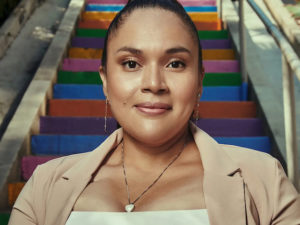Mission Will be the First Time Induced Pluripotent Stem Cells are Produced in Microgravity
EDITOR’S NOTE: The launch has been set for 5:37 p.m. EDT May 21.
Cedars-Sinai contacts:
Soshea Leibler, (213) 215-8000, [email protected]
Christina Elston, (626) 298-0702, [email protected]
Cedars-Sinai investigators, in collaboration with Axiom Space of Houston, are sending stem cells to space to explore whether microgravity can make it easier and more efficient to produce large batches of stem cells.
In this mission, the first in a series funded by NASA, astronauts will manufacture induced pluripotent stem cells (iPSCs) in space for the first time. Astronauts on the International Space Station will grow and differentiate the stem cells to see whether microgravity affects how the cells develop into other cell types, such as brain and heart cells.
“A major challenge for using iPSCs for therapies in humans is making enough of them at very high quality,” said co-principal investigator Arun Sharma, PhD, a stem cell biologist at Cedars-Sinai’s Board of Governors Regenerative Medicine Institute and Smidt Heart Institute.
“We want to be able to mass-produce them by the billions so that we can utilize them for a number of different applications,” Sharma said, “including discovering new drugs that may be able to improve heart function. And while we’ve gotten better at this over the last few years, there are still certain limitations when it comes to production of these stem cells, and we think microgravity may be able to overcome some of these.”
A pluripotent stem cell is one that has been reprogrammed to go back in time to a powerful state of “pluripotency,” in which it can be turned into nearly any human cell type. It can then be developed into models of disease and used for tailored treatments.
Low Gravity May Allow Cells to Grow Faster
Gravity-induced tension on Earth may make it hard for iPSCs to expand and grow. In a low-gravity environment, however, this stress may no longer present a barrier, possibly enabling stem cells to multiply faster.
“Gravity constantly pulls these pluripotent stem cells towards Earth, putting pressure on them and providing a stimulus to start turning into other cell types, but in microgravity, that effect will no longer be there,” said Clive Svendsen, PhD, executive director of the Cedars-Sinai Board of Governors Regenerative Medicine Institute and co-principal investigator.
“When the stress of gravity is not there pulling on the cells, we want to test whether they grow faster, have fewer genetic changes and remain in the pluripotent state,” Svendsen said. “Then, when we turn them into the critical cells we need for health care, we will see if they do it better in microgravity. That is the goal of this new mission, and we are all very excited to see what happens up there.”
The upcoming missions also include the expertise of Dhruv Sareen, PhD, and his team. Collaborators on the NASA grant, the team is manufacturing clinical-grade stem cells at the Cedars-Sinai Biomanufacturing Center.
Mission Details
Ax-2 Mission PatchA SpaceX Falcon 9 rocket will launch the Ax-2 crew aboard a Dragon spacecraft to the International Space Station from NASA’s Kennedy Space Center in Florida.
The Cedars-Sinai team, which also includes postdoctoral fellow Maedeh Mozneb, PhD, and research associate Madelyn Arzt, will be on site at the space center to prepare the stem cells and load them onto the spacecraft. Researchers will study the cells to see how well they divide and take up DNA during spaceflight. The first mission will take about a week and will pave the way for longer missions in the coming months.
For live mission updates on Twitter, follow @CedarsSinaiMed, @ArunSharmaPhD and @CliveSvendsen.

